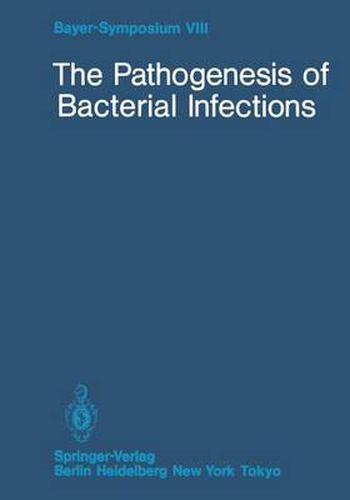Readings Newsletter
Become a Readings Member to make your shopping experience even easier.
Sign in or sign up for free!
You’re not far away from qualifying for FREE standard shipping within Australia
You’ve qualified for FREE standard shipping within Australia
The cart is loading…






This title is printed to order. This book may have been self-published. If so, we cannot guarantee the quality of the content. In the main most books will have gone through the editing process however some may not. We therefore suggest that you be aware of this before ordering this book. If in doubt check either the author or publisher’s details as we are unable to accept any returns unless they are faulty. Please contact us if you have any questions.
G. G. Jackson The pathogenesis of bacterial infection defines the dynamics at an interface of ecologic association of bacteria and host. First, it occurs at the portal of initial contact with a per missive target cell. The infected cell provides either a passive or a specific receptor for the bacterium or its products, to gether with ligands and an environment of helper and inhibiting factors. The result is bacterial replication to produce an im balance of a potentially commensal relation which, under other defined conditions, would be optimal for the survival of both the host and bacterial cells. Virulence and pathogenesis are both absolute and relative terms. They must be interpreted strictly according to the circumstances of site-specific inter actions of bacterial and host cells, membrane composition, structure, characteristics, and environmental substances. The bacteria themselves may have, acquire, or switch on or off under certain conditions, the products or properties that produce cellular damage that we recognize as virulence. Another result of bacterial infection may be to stimulate a normal host cell function to perform at a pathophysiologic level, causing illness that we recognize as virulence. A third marker of virulence may be the ability to invade a cell or tissue barrier and produce a pathologic effect at a site that is remote from the portal of commensal association or pathologic entry.
$9.00 standard shipping within Australia
FREE standard shipping within Australia for orders over $100.00
Express & International shipping calculated at checkout
This title is printed to order. This book may have been self-published. If so, we cannot guarantee the quality of the content. In the main most books will have gone through the editing process however some may not. We therefore suggest that you be aware of this before ordering this book. If in doubt check either the author or publisher’s details as we are unable to accept any returns unless they are faulty. Please contact us if you have any questions.
G. G. Jackson The pathogenesis of bacterial infection defines the dynamics at an interface of ecologic association of bacteria and host. First, it occurs at the portal of initial contact with a per missive target cell. The infected cell provides either a passive or a specific receptor for the bacterium or its products, to gether with ligands and an environment of helper and inhibiting factors. The result is bacterial replication to produce an im balance of a potentially commensal relation which, under other defined conditions, would be optimal for the survival of both the host and bacterial cells. Virulence and pathogenesis are both absolute and relative terms. They must be interpreted strictly according to the circumstances of site-specific inter actions of bacterial and host cells, membrane composition, structure, characteristics, and environmental substances. The bacteria themselves may have, acquire, or switch on or off under certain conditions, the products or properties that produce cellular damage that we recognize as virulence. Another result of bacterial infection may be to stimulate a normal host cell function to perform at a pathophysiologic level, causing illness that we recognize as virulence. A third marker of virulence may be the ability to invade a cell or tissue barrier and produce a pathologic effect at a site that is remote from the portal of commensal association or pathologic entry.